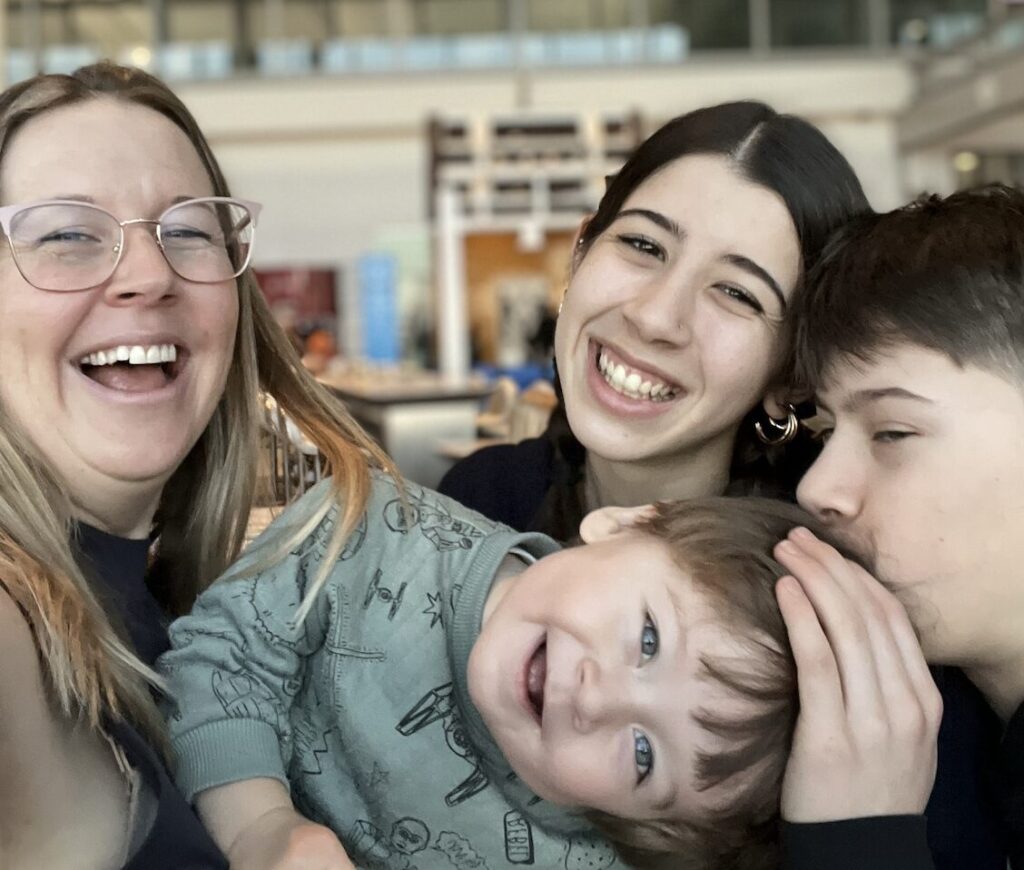
My five-year-old son held up a cheese string and pointed it at me: “Bang bang!” he yelled. “You’re dead.” I was horrified, but my disbelief was magnified when my younger son drew a stick figure surrounded by a series of circles.
“They’re bombs,” he told me proudly.
I wanted my boys to know that gun play and bombs weren’t funny, but, at the same time, I wondered, was this normal?
“There’s no absolute answer,” says Liza Finlay, a psychotherapist in Toronto. “Kids start mimicking what they see and hear around them as soon as they can walk and talk.”
She agrees that putting up with gun play may not be ideal. “I don’t recommend encouraging play with toy guns – but many parents find that despite their best efforts their kids turn fallen branches into swords and their fingers into guns.”
The best way to deal with this situation is to talk to your kids about it, says Liza. “Instead of starting a power struggle, tell your kids what you are willing and unwilling for them to play and what your concerns are. Then leave it be.”
I played cops and robbers when I was a kid and I don’t remember that my parents were overly concerned, but it seems things have changed. “Technology has exploded and guns are now pervasive in movies and television, as well as video games,” says Liza.
We also can’t escape the reality of shootings like the one at Sandy Hook Elementary School in Newtown, Conn., in 2012 . “This exposure makes us all too aware of the dangers of guns,” says Liza. “The data is not conclusive. We can’t draw a straight line from violent video games and television to mass shootings, but I think it’s safe to say there is a correlation.”
Knowing how to explain real gun violence to your child can be tricky, but it’s an important conversation to have, especially as they approach school age. “Kids don’t understand ‘dead’ – as in gone forever – until about age four or five,” says Liza. “At that age they might begin to contend with impermanence. They also start to begin to appreciate the difference between reality and fiction. That’s where the conversation starts.”
As they get older, Liza says your messaging can change accordingly. Liza recalls talking to her two sons, then 13 and eight, after a mass shooting in a school. “My 13-year-old and I talked about what happens when a troubled kid gets a hold of a gun. With my eight-year-old, the conversation centred more around reparation and what could be done to help mourning families heal,” she says.
An appropriate message at any age is the importance of empathy. “Empathy is something we’re hard-wired for, but, like a muscle, it needs to be exercised. So, as much as we want to discuss the dangers of guns, we want to highlight the importance of caring and tending to one another. Finding opportunities for kids to give and share and contribute is as powerful an antidote to gun obsession as anything,” Liza says.
Though you can’t prevent a child from playing games that mimic guns – you’ll just drive them underground if you outright prohibit them, warns Liza – you can opt to not buy toy guns or video games with gun violence. “You can also ensure that there are limits, that they aren’t playing these games exclusively.” And continued communication around what’s real and what’s not is key.
Liza cautions that parents should start to be concerned with the pretend gun play comes in conjunction with other signs of distress, like isolation, withdrawal, school avoidance or insomnia. “You may need to seek more help if this occurs.”
Originally published in ParentsCanada magazine, Feb/Mar 2015.









